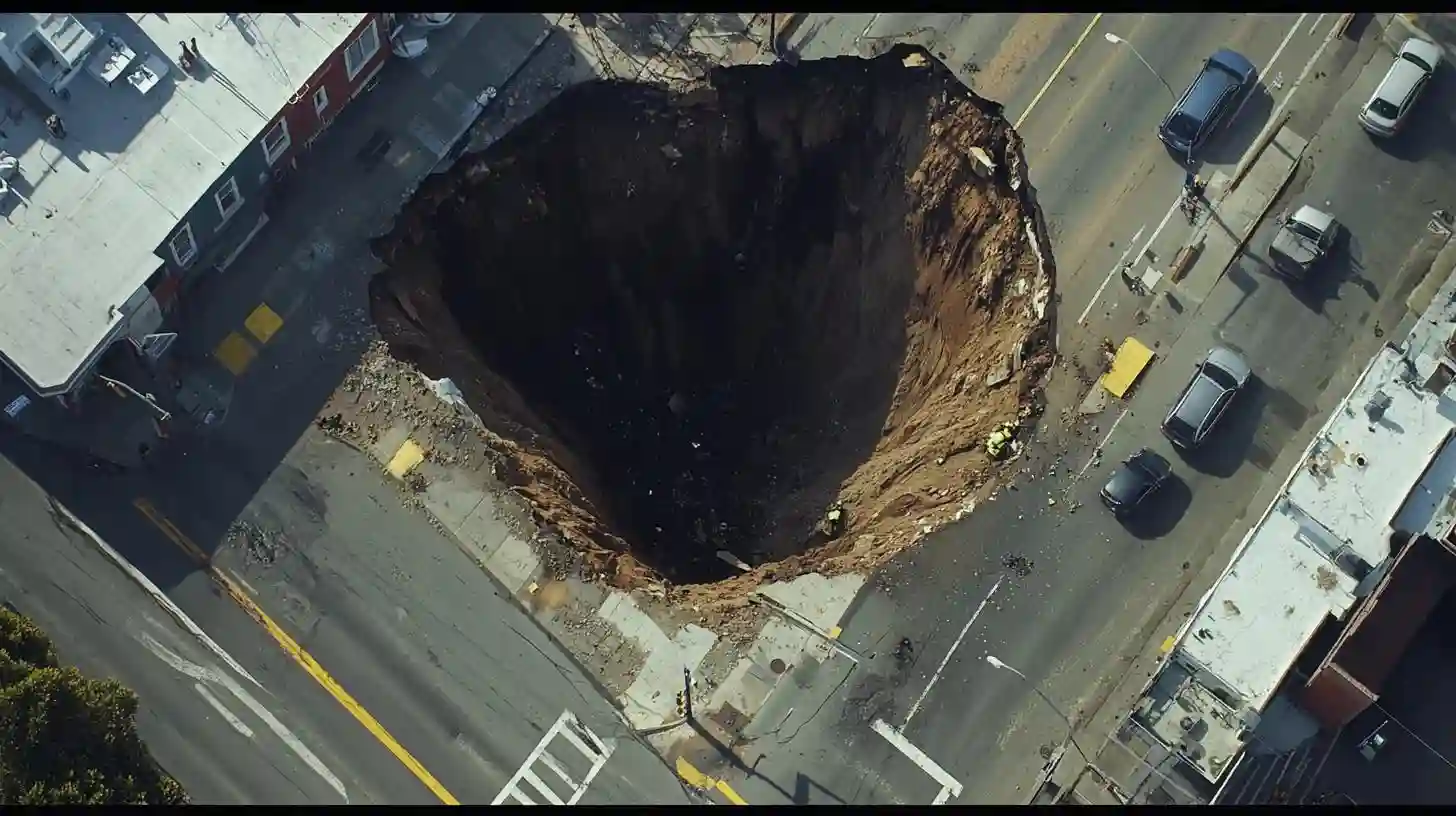
A massive sinkhole has emerged in the heart of San Francisco, causing significant disruption to traffic and raising concerns among local residents about the integrity of the city's infrastructure. The sinkhole, roughly wide and deep, has quickly turned into a focal point of anxiety for people living and working in the area. News of this sinkhole has traveled rapidly through both media outlets and social platforms, illustrating the urgency of the situation while the city grapples with the implications on transportation and safety.
Residents immediately expressed their worries about the stability of the ground beneath their feet. Many are concerned that this sinkhole may indicate underlying issues with the city's aging infrastructure, which has been a point of discussion for years. Ground stability is a significant issue in coastal cities, particularly one like San Francisco, where hills, soft soil, and seismic activity regularly challenge construction and maintenance efforts. As people take to social media to voice their concerns, some are recalling similar incidents that have occurred in the past, raising alarms about the potential for more sinkholes to arise if immediate action is not taken.
The sinkhole caused substantial traffic disruption, leading to diversions and road closures that left many motorists frustrated. Commuters who typically rely on the affected routes found themselves struggling to navigate alternative pathways, resulting in increased congestion in surrounding neighborhoods. The city has implemented detours and traffic management strategies, but the breadth of the disruption has made these solutions less effective than desired. Local businesses are also feeling the pinch, with diminished foot traffic and concerns about accessibility impacting their daily operations.
City officials quickly deployed emergency crews to assess the situation and determine the sinkhole's cause. Initial investigations revealed that a combination of heavy rainfall and soil erosion might have contributed to its formation. As part of their response, experts are conducting thorough geological assessments to gauge the extent of the underlying issues. This approach aims to ensure public safety while informing any necessary repair work. Public meetings are being held to keep residents informed about developments, offering them an opportunity to voice their concerns and gather more information about the city's plans.
Moreover, the timing of this sinkhole has sparked broader discussions about maintenance and investment in urban infrastructure. The event serves as a stark reminder of the need for continued vigilance when it comes to the structural integrity of such an important area. Infrastructure experts and city planners are increasingly emphasizing the importance of conducting regular assessments and prioritizing upgrades. As more cities face similar challenges, including aging pipes and roads, this incident may light a fire under initiatives aimed at modernizing infrastructure to withstand environmental challenges.
Residents have rallied together to voice their concerns, hoping that their collective input will encourage city officials to take the necessary actions to prevent future sinkholes. Community meetings have become platforms for discussing important issues such as urban planning, disaster preparedness, and climate resilience. This grassroots engagement has not only brought people together but has also highlighted the importance of local stewardship in preserving the integrity of the community's infrastructure.
Despite the temporary nature of the disruption, the ongoing dialogue provoked by the sinkhole continues to resonate deeply within the community. Individuals are increasingly interested in understanding the broader implications of such events on their safety, property values, and overall quality of life. As residents navigate their daily routines amidst this inconvenience, they remain attentive to the city's response and the forthcoming enhancements to infrastructure.
In many ways, this sinkhole is a catalyst for a more profound conversation about urban living in a dynamic, seismic city. While the immediate situation requires addressing traffic disruptions and safety concerns, the longer-term implications invite scrutiny of how cities, particularly those built on challenging terrains, can ensure resilience in the face of geological challenges. As San Francisco faces this significant hurdle, the manner in which city officials cope with the aftermath may set a precedent for their future approaches to urban planning and disaster management. Each layer of this incident reveals more than just a large hole in the ground; it embodies a pressing call to action for more robust practices in maintaining the essential frameworks that sustain urban life.